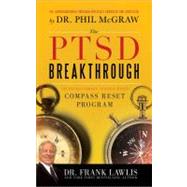
Note: Supplemental materials are not guaranteed with Rental or Used book purchases.
Purchase Benefits
What is included with this book?
| Acknowledgments | p. vii |
| Preface | p. ix |
| A New Hope for the Victims of PTSD | p. 1 |
| Step One: Nurturing and Healing the Brain | p. 27 |
| Step Two: Cleansing the Brain of Toxins and Poisons | p. 57 |
| Step Three: Making Reconnections and Taking Control of the Disoriented Brain | p. 83 |
| Step Four: Relinquishing Fear and Rage | p. 109 |
| Step Five: Creating a New Beginning | p. 133 |
| Step Six: Re-establishing Your Internal Compass | p. 153 |
| Forwarding Words | p. 175 |
| Appendix: Stress Reduction Script | p. 183 |
| Resources | p. 193 |
| About the Author | p. 201 |
| Index | p. 203 |
| Table of Contents provided by Ingram. All Rights Reserved. |
The New copy of this book will include any supplemental materials advertised. Please check the title of the book to determine if it should include any access cards, study guides, lab manuals, CDs, etc.
The Used, Rental and eBook copies of this book are not guaranteed to include any supplemental materials. Typically, only the book itself is included. This is true even if the title states it includes any access cards, study guides, lab manuals, CDs, etc.